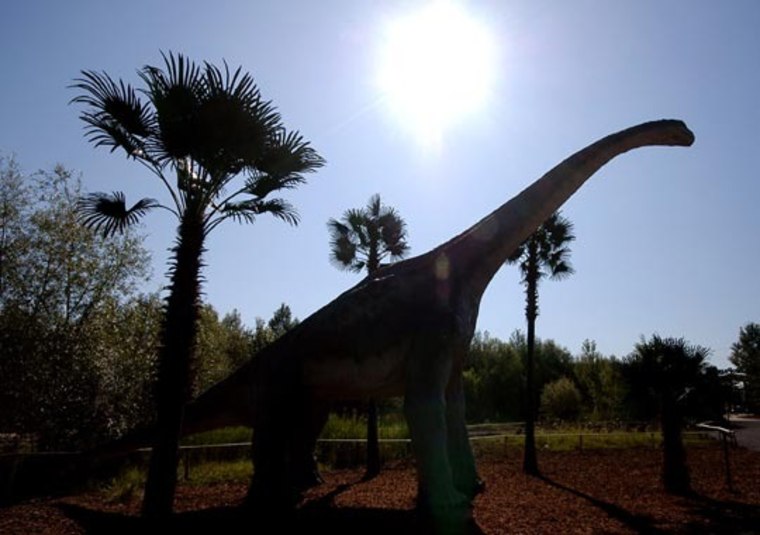Remains of a dinosaur, nicknamed the "giraffe of the Mesozoic" due to its long neck and forelimbs, were recently discovered in China, according to a paper in the Proceedings of the Royal Society B.
The dinosaur, Qiaowanlong kangxii, is the first Early Cretaceous brachiosaur ever found in China.
Its name refers to a famous Qing Dynasty emperor, Kangxi, and also contains the words for "bridge," "bend in a stream," and "dragon," references to the site as well as a dream the emperor is said to have had.
Brachiosaurs — a family of plant-eating sauropods — are often quite big. One of the largest mounted skeletons in the world is a Brachiosaurus at the Humboldt Museum in Berlin. The new species is "relatively small" by comparison.
Co-author Hai-Lu You told Discovery News that the Chinese dinosaur stood at about 39.3 feet long, 9.8 feet tall, and weighed around 10 tons.
"As a member of the brachiosaurid (family), it has a long neck and relatively long forelimbs," added Hai-Lu, a scientist at the Chinese Academy of Geological Sciences in Beijing.
Hai-Lu and colleague Da-Qing Li analyzed the dinosaur's skeletal remains, which were excavated at the Yujingzi Basin in northwestern Gansu Province. The dinosaur dates to 100 million years ago.
The researchers determined that the dinosaur possessed a bifurcated, or two-part, neural spine. These are known in other sauropods, but this is the first time the feature has been identified in a brachiosaur.
The structure of its spine, and the rest of the dinosaur's bones, suggest that "its neck should have been held aloft, with a more vertical than horizontal behavior," Hai Lu said. That counters some other recent arguments about sauropods, indicating their ultra long necks were almost parallel to the ground, sweeping back and forth like a metal detector.
Instead, Hai-Lu suggests the animals fed on leaves and other plant materials high above the ground, giving them a less competitive food niche.
Previously it was thought that sauropods were most prevalent during the Jurassic Period of North America and Africa, with some paleontologists theorizing these dinosaurs underwent a rapid population decline in the Early Cretaceous.
"However, based on recent discoveries, more and more Cretaceous sauropods have been recovered, and many are from Asia," Hai Lu said.
The same site where Q. kangxii was found has turned into a hotbed for dinosaur fossils of that period, with at least three new species discovered there in just the past few years.
As a result, Jerry Harris, director of paleontology at Dixie State College, told Discovery News that he's "rarely surprised" now by unusual dinosaur finds in China.
"What makes this discovery so important is how it fits into the bigger picture of how dinosaur populations were able to move around globally in the Early Cretaceous," Harris said, explaining that land connections between the continents were disappearing at around this time.
The new Chinese brachiosaur, however, shares characteristics with dinosaurs found in North America, suggesting that some connections between the continents did still exist at that time, if only intermittently, he added.
Dinosaurs 100 million years ago seem to have taken advantage of these connections, which could explain why many North American and Chinese dinosaurs appear to have been closely related.
Harris believes the new dinosaur find in China "is a wonderful discovery that adds new knowledge to our understanding of how dinosaurs could move around during this time period."
